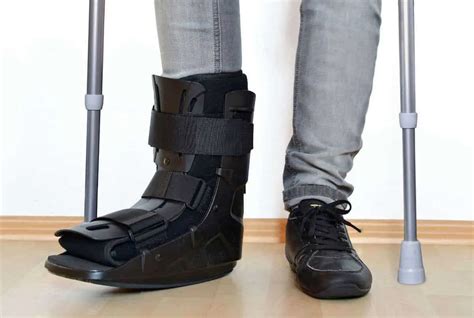A walking boot is a supportive footwear device designed to provide immobilization and protection to an injured or recovering foot or ankle. It is commonly used to treat conditions such as sprains, fractures, and soft tissue injuries. Choosing the right walking boot is crucial for ensuring a comfortable and effective recovery. This guide provides a detailed overview of where to find and purchase walking boots, considering various factors to help you make an informed decision.

Types of Walking Boots
Walking boots vary in their construction and functionalities to accommodate different injury types and levels of support required. Here are the common types:
- Short Walker Boots: These boots cover from the toes to just below the calf, providing support to the forefoot and ankle. They are ideal for minor sprains and fractures.
- Tall Walker Boots: These boots extend from the toes to mid-calf or knee, offering full ankle and lower leg support. They are suitable for more severe injuries and post-operative recovery.
- Air Cast Boots: These inflatable boots provide adjustable compression and support. They can be customized to the swelling and contours of the foot, making them comfortable for long-term use.
- Surgical Boots: These highly supportive boots are specifically designed for post-surgical recovery. They offer maximum immobilization and protection for the foot and ankle.
Where to Buy a Walking Boot
The availability of walking boots varies depending on the location and healthcare system. Here are some common channels for purchasing walking boots:
1. Medical Supply Stores:
These specialized stores carry a wide range of medical equipment, including walking boots. They may offer professional assistance in selecting the right boot and provide fitting services.
2. Pharmacies:
Many pharmacies stock a limited selection of walking boots and other orthopedic products. They can be a convenient option for quick purchases or refills.
3. Orthopedic Clinics:
Orthopedic clinics typically provide a comprehensive range of walking boots and other orthopedic devices. They may offer customized fittings and recommendations based on a patient’s specific needs.
4. Online Retailers:
Online platforms like Amazon and medical equipment websites offer a vast selection of walking boots. They provide delivery options and often have customer reviews and product comparisons available.
5. Medical Equipment Rental Services:
Some medical equipment rental services provide walking boots on a short-term basis. This can be a cost-effective option for temporary use or when traveling.
Factors to Consider When Buying a Walking Boot
To ensure the best fit and support, consider the following factors when choosing a walking boot:
- Injury Type: The boot should provide the appropriate level of support for the specific injury or condition being treated.
- Foot Size: The boot must be the correct size to provide optimal support and comfort. Proper fitting can prevent pressure points and skin irritation.
- Height: The height of the boot should align with the extent of the injury or support required. Shorter boots are more suitable for minor injuries, while taller boots provide support for the entire foot and ankle.
- Material: Walking boots are commonly made from materials such as plastic, leather, or fabric. Consider the durability, breathability, and ease of cleaning when making a selection.
- Cushioning: The inner lining of the boot should provide ample cushioning to reduce pressure and discomfort.
- Closure: The boot should have a secure closure system, such as laces or Velcro straps, to ensure a snug and adjustable fit.
Common Mistakes to Avoid When Buying a Walking Boot
- Ignoring the Injury Type: Choosing a boot that is too supportive or not supportive enough can hinder recovery.
- Buying the Wrong Size: An ill-fitting boot can cause pain, blisters, and delayed healing.
- Overlooking the Height: A boot that does not extend sufficiently may not provide adequate support for the injured area.
- Neglecting Cushioning: A boot with insufficient cushioning can lead to discomfort and pressure sores.
- Failing to Consider Closure: A closure that is difficult to adjust or becomes loose can affect the stability of the boot.
Benefits of Wearing a Walking Boot
Proper use of a walking boot offers several benefits for foot and ankle injuries:
- Immobilization: The boot restricts movement, providing the necessary stability and support for healing.
- Protection: It shields the injured area from further trauma and external impacts.
- Pain Reduction: By immobilizing the foot, the boot reduces pain and inflammation.
- Stability: The rigid structure of the boot provides a stable base for walking, reducing the risk of falls and further injury.
- Accelerated Healing: By providing optimal support and protection, the boot promotes faster healing and recovery.
Conclusion
Choosing the right walking boot is essential for a comfortable and effective recovery from a foot or ankle injury. By considering the factors discussed in this guide, you can make an informed purchase decision. Remember to consult with a medical professional for personalized recommendations and proper fitting to ensure the best outcome for your injury.
